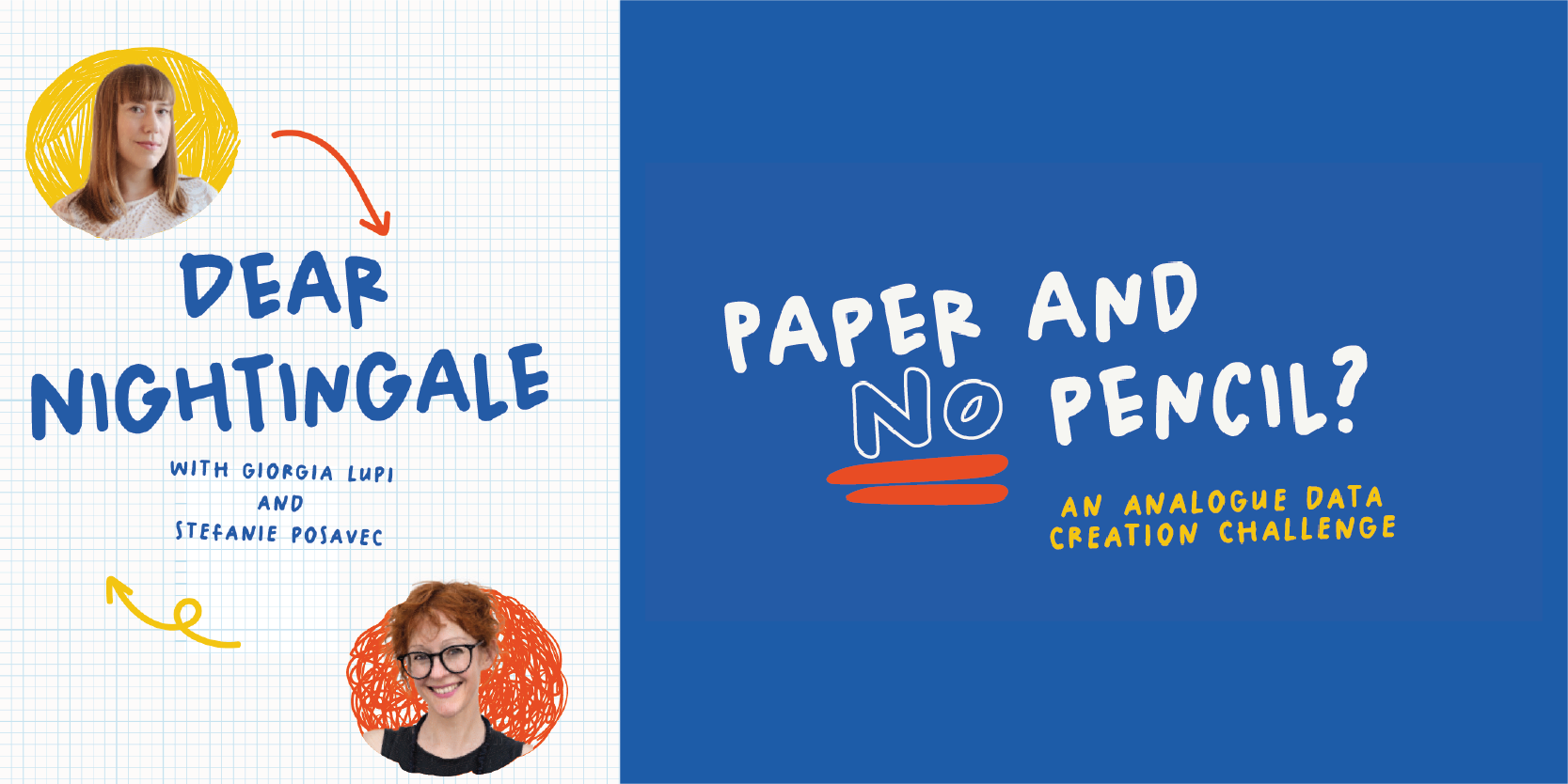This article originally appeared in Issue 1 of Nightingale Magazine. Purchase a copy, while supplies last.
Paper and no pencil? An analogue data creation challenge!
Create a handmade data object to visualise a dataset, but here’s a twist: drawing is NOT allowed. (As you can imagine, we are tired of drawing. 🙂 )
How to begin?
Start with an A4 or letter-sized sheet of paper of any thickness, in any color. How can you use this simple sheet of paper as a starting point to represent data if you don’t have any drawing utensils at your disposal?
You can cut / collage / fold / stitch / poke holes / glue / paint / tape / and anything else you can think of! Well, except drawing, that is. 🙂
You are allowed to write your legend and any annotations of course!
Why no drawing?
It’s often said that creativity comes from constraints, so we challenge you to get out of your comfort zone. This sort of beautiful experimentation is what moves the field of data visualization forward!
What data should I use?
Any recent personal dataset that you want to work with! (We feel we’ve set enough constraints already. 🙂 )
This could be a dataset you collected to discover more about yourself, to document aspects of your life, or to be given to another person to commemorate a special occasion or relationship. It’s up to you!
If you are feeling stumped, here are some possible starting points:
1. Emotions and feelings
For one day / one week, set an alarm on your phone for every hour you are awake. When you hear the alarm, pause, and make a note of your primary emotion. Do you feel calm, excited, anxious, confused, irritated, sad, neutral, or something else? Next, try adding additional contextual details, such as who you were with, what you were doing, and if something specific caused the feeling.
2. Friends
Who are the 15 to 20 people you consider your closest friends? Write them down, along with the topics you talk about and what type of friend they are, and draw them! You can be creative and personal: add details such as how long you have known them, how often you talk to them, or how their presence in your life makes you feel.
3. Media
For one day / one week, make a note of what you have read / watched / listened to, keeping track of the different types of media (books, TV, streaming service, etc) and topics. Remember to be honest about your social media or pandemic news habits! You can add details about your feelings after consuming these different types of media (empowered? more anxious? inspired?), and if you think you should have done something else with that time instead. 🙂
4. Positive thoughts
Spend one day / one week collecting every positive thought you have about something or someone, and make a note of what sort of positive feeling it was, such as love, gratitude, friendship, and more. You may also note down who or what you were thinking about, and try to have more of these positive thoughts! 🙂
5. Sounds
Set a timer for 30 minutes, then during this time be mindful, listen carefully, and make a note of every sound you hear. When the time is up, think about how to categorise these sounds and draw them. Were they from nature, animals, people, machines…or even you?
6. Connections
How do you stay connected to people these days? For one day / one week, keep track of all the ways you keep in touch / reach out to / interact with friends, family, neighbors, and essential workers in order to celebrate these human connections, even if they are few and far between, or often digitally! Add details about the type of connection, for example: did you see them through a screen or only talk to them on the phone? Note down how it made you feel.
Need inspiration?
Use art as inspiration. Browse through the digital collection of your favorite art museum: are there any interesting ways of creating work that you can try on a smaller scale?
Look back to your childhood: how did you create art then? The ways that children use to create art, such as potato printing, sponge painting, or even gluing pasta to paper, can still be used now!
Use an object in a different way. Look around you: is there a material that you have on hand that you can use to communicate data? Plants, packaging, stones, foodstuffs…it’s up to you!
Documentation
If you have made something three-dimensional, take at least one high res photo (at least 300 dpi) of the object and its legend on a neutral background. If your end result is two-dimensional, scan your work at a high resolution (again, at least 300 dpi).
Send your work to nightingale@datavisualizationsociety.org by SEPTEMBER 16, 2022, to be featured in Nightingale.








